![]()
![]()
![]()
Use LEFT and RIGHT arrow keys to navigate between flashcards;
Use UP and DOWN arrow keys to flip the card;
H to show hint;
A reads text to speech;
41 Cards in this Set
- Front
- Back

|
Class: Actinopterygii
Order: Acipenseriformes Common name: Sturgeon Info: -The sturgeon, incl Acipenser -5 rows of bony scutes remnants of ganoid sclaes -Protrusible, bottom oriented mouth that is preceded by 4 barbels -Teeth absent in adults |
|
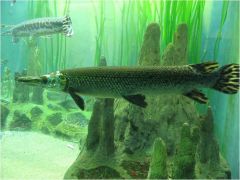
|
Class: Actinopterygii
Order: Lepisosteiformes Common name: The gar Info: -The gar, inlc. Lepisosteus -Body covered with ganoid scales -Sharp, conspicuous teeth -Dorsal and anal fins near caudal -Lie-in-wait predators |
|

|
Class: Acinopterygii
Order: Amiformes Common name: The bowfin Info -Bowfin, Amia calva -Caudal fin abbreviate heterocercal -10-13 brachiostegal rays -Swim bladder can function as a lung -Dorsal fin base long -No pyloric caeca |
|

|
Class: Actinopterygii
Order: Anguilliformes Info: -Lack pelvic fins -Cycloid scales, either deeply embedded in skin or absent -Lack gill rakers -Reduced skeleton |
|
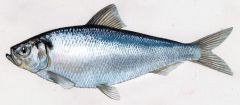
|
Class: Actinopterygii
Order: Clupeiformes Info: -Keeled, saw tooth bellies -Feed on zooplankton and phytoplankton |
|
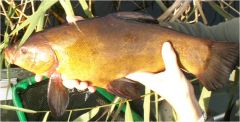
|
Class: Actinopterygii
Order: Cypriniformes Family: Cyprinidae Info: -Minnows, carp -Many synapomorphies are cranial characteristics -Pharyngeal teeth (pharyngeal bone) -Upper jaw usually protractile -Adipose fin absent -Head almost always scaleless -Brachiostegal rays- 3 |
|
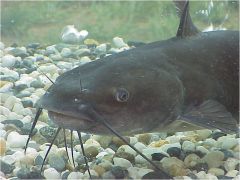
|
Class: Actinopterygii
Order: Siluriformes Info: -Several species know for venomous spines, esp. pectoral fins -Largest catfish 3m long -Maxilla toothless and rudimentary |
|

|
Class: Actinopterygii
Order: Salmoniformes Info: -Freshwater and anadromous, lack oral barbuals -Adipose fin present (also in siluriformes??) |
|
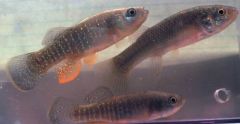
|
Class: Actinopterygii
Order: Cyprinodontiformes Info: -Include several threatened or endangered species native to SW -Lateral line represented on body by only pitted scales -Brachiostegal rays 3-7 -Upper jaw bordered by premaxilla only -Upper jaw protrusible -Marked sexual dimorphism with males often brightly colored |
|
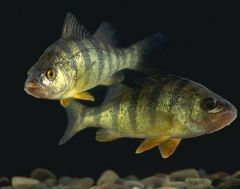
|
Class: Actinopterygii
Order: Perciformes Info: -Most diversified of all fish orders -Largest order of vertebrates -Protrusible jaws -Comprised of "lower teleosts" and Percoidei -taxonomy unresolved |
|

|
Class: Amphibia
Order: Caudata Family: Proteidae Info: -E.g. Necturus, the mudpuppy) -External gills in adult forms -Paedomorphosis -Laterally compressed tail -Reduction in number of phalanges |
|

|
Class: Amphibia
Order: Caudata Family: Ambystomatidae Info: -Premaxillae paired -Pterygoid present -Lacrimals absent -Vomerine teeth -Costal Grooves -Tubricles -Tail flattened laterally -Operculum present |
|

|
Class: Amphibia
Order: Caudata Family: Plethodontidae Info: -Premaxillae paired -Teeth pedicillate, palatal teeth extend posteriorly along medial edge of vomer -Operculum absent -Lungless -Costal grooves -Nasiolabial grooves -Lacrimal, pterygoid, lungs absent (pterygoid present in larvae) |
|
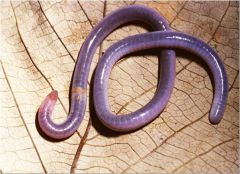
|
Class: Amphibia
Order: Gymnophiona Family Caecilidae Info: - Limbless -Eyes small, covered with skin or bone -skull charac. by fusion: maxilla and palatine into maxillopalatine -Limbs modified for jumping -Left lung usually redimentary -Tailless -Squamosal articulates with frontal -Recessed moth and no tail |
|
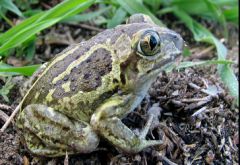
|
Class: Amphibia
Order: Anura Family: Pelobatidae Info: -Maxillary and vomerine teeth present -Vertical pupils -No parotid glands -Pelvic amplexus -Spade-like structures on ventral foot |
|

|
Class: Amphibia
Order: Anura Family: Bufonidae Info: -True toads -Stocky build -Parotid glands posterior to eye and across epidermis - No teeth -Horizontal pupils -Pectoral amplexus |
|
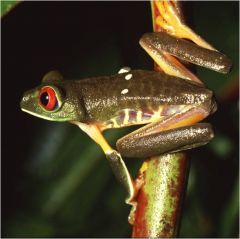
|
Class: Amphibia
Order: Anura Family: Hylidae Info: -Horizontal pupl -Gracile body form -Lack parotid glands -Toe pads present |
|
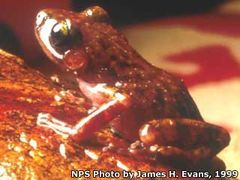
|
Class: Amphibia
Order: Anura Family: Leptodactylidae Info: -Neotropical frogs -No morphological synapomorphies, distinguised more by what they lack- absence of characters found in other anurans -Most lack ribs -Most have teeth -Habits can be fossorial, terrestrial, arboreal, or aquatic -In NM, representaed by Barking frog -United States Populations differ in external coloration and vocalization frequency and duration |
|
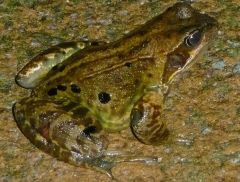
|
Class: Amphibia
Order: Anura Family: Ranidae Info: -True frogs -Pectoral amplexus by males-males have swollen forelimbs and thumbs to better grip femals while mating -Dorsolateral folds in Rana Pipiens -Webbing between phalanges -Hind limb usually significantly longer than forelimbs |
|
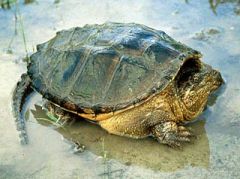
|
Order: Testudinata
Suborder: Crytodira Family Chelydridae Info -Strong powerful jaws -Reduced plastron -Carapace with 3 rows of keels -Long tail |
|
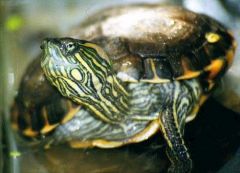
|
Order: Testudinata
Suborder: Crytodira Family: Emydidae Info: -Box turtles -Unkeeled carapace |
|
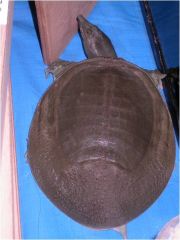
|
Order: Testudinata
Suborder: Crytodira Family: Trionychidae Info: -Spiny soft-shelled turtles -Round flat, flexible shell -Webbed feet -Long rostrum with external nares at distal end |
|

|
Order: Lepidosauria
Family: Crotaphytidae Info: -Collared lizards -Prominent collar markings at base of neck |
|

|
Order: Lepidosauria
Family: Phrynosomatidae Info 1. Roundtail horned lizard -Horned Lizard -Slender round tail -No fringe on sides 2. Side-blotched lixard -Dark blotch lateral aspect posterior to forelimbs 3. Eastern fence lizard -Scales spiny, keeled and pointed -Overlapping scales on dorsal aspect -"blue bellies" -Incomplete gular fold |
|
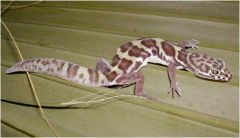
|
Order: Lepidosauria
Family: Gekkonidae Info: -Large eyes -Finely granular scales |
|
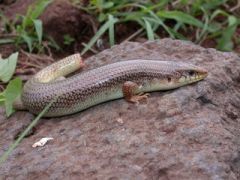
|
Order: Lepidosauria
Family: Scincidae Info: -Short limbs and stout body -Large, smooth cycloid scales |
|
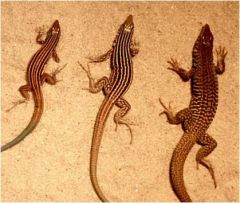
|
Order: Lepidosauria
Family: Teiidae Info: -Slim body, long tails -Large ventral scales in transverse rows -Dorsal scales granular -Head scales large and symmetrical -Gular fold present -Some teiids are parthenogenic |
|
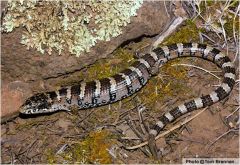
|
Order: Lepidosauria
Family: Anguidae Info: -Short limbs -Lateral folds dividing dorsal and ventral scales |
|
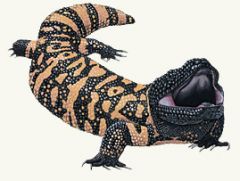
|
Order: Lepidosauria
Family: Helodermatidae Info: -Only known venemous lizard in the USA -Bead like (grandular) scales -Large head and body, thick tail |
|

|
Order: Squamata
Family: Colubridae Info: -Kingsnake- black or dark brown with white or yellow chain like pattern or dorsum -Western hognose snake- snout is upturned and pointed, venter is pigmented black, verterbral blotches -Gopher snake- anal scale single, not divided, dorsal scales keeled |
|
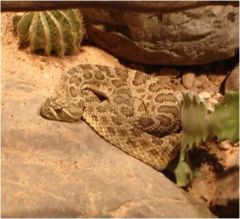
|
Order: Squamata
Family: Viperidae Info: -Venomous -Loreal pits between eye and external nares -Broad triangular head -Rattle, keeled scales |
|
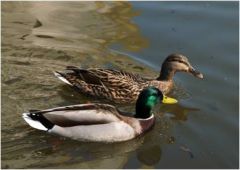
|
Order: Anseriformes
Family: Anatidae Info: -Heavy bodies, swimming birds, geese and ducks -Pedicillate teeth -Dorsal ventrally compressed bill--called spatulate -Extensive webbing on feet -Sexually dimorphic |
|

|
Order: Gruiformes
Family: Rallidae Info: -Lobed feet -Black with white bill -Cere present |
|
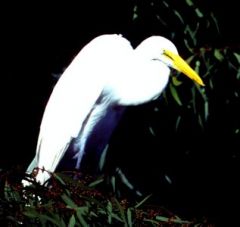
|
Order: Ciconiformes
Family: Ardedae Info: -Long legged waders, plover -Long legs for wading (herons) |
|
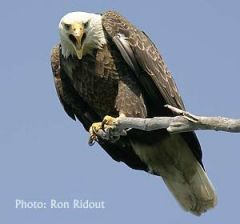
|
Order: Falconiformes
Family: Accipitridae Info: -Hawks -Broad wings -Hooked beaks -Sharp talons -Nostrils open through a cere |
|
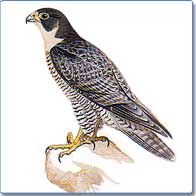
|
Order: Falconiformes
Family: Falconidae Info: -American kestrel -Sexual dimorphism -Male grey wings and spotted belly -Female reddish black |
|
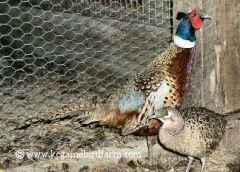
|
Order: Galliformes
Family: Phasianidae Info: -Granivores, short, thick limbs with well developed nails -Long tails for flight stabilization -White collar -What type of wings do this bird family exhibit |
|
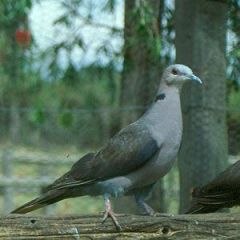
|
Order: Columbidormes
Family: Columbidae Info: |
|
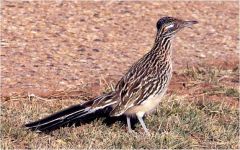
|
Order: Cuculiformes
Family: Cuculidae |
|

|
Order: Strigiformes
Family: Strigidae Info: -Typical owl, silent flight -Zygodactyl, raptorial feet -Facial disk, and forward facing eyes -Lack crop -Silent flight achieved 1) Leading edges of primaries covered with stiff, comb-like fringes to reduce noise 2) trailing edge of flight feathers have soft fringe to reduce turbulence and 3) flight feathers and wing coverts covered with downy feathers -Holorhinal nostrils |
|
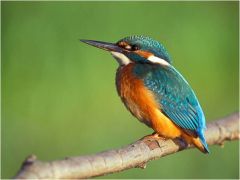
|
Order: Coraciformes
Info: -King fishers/Toucans -Long beak |

